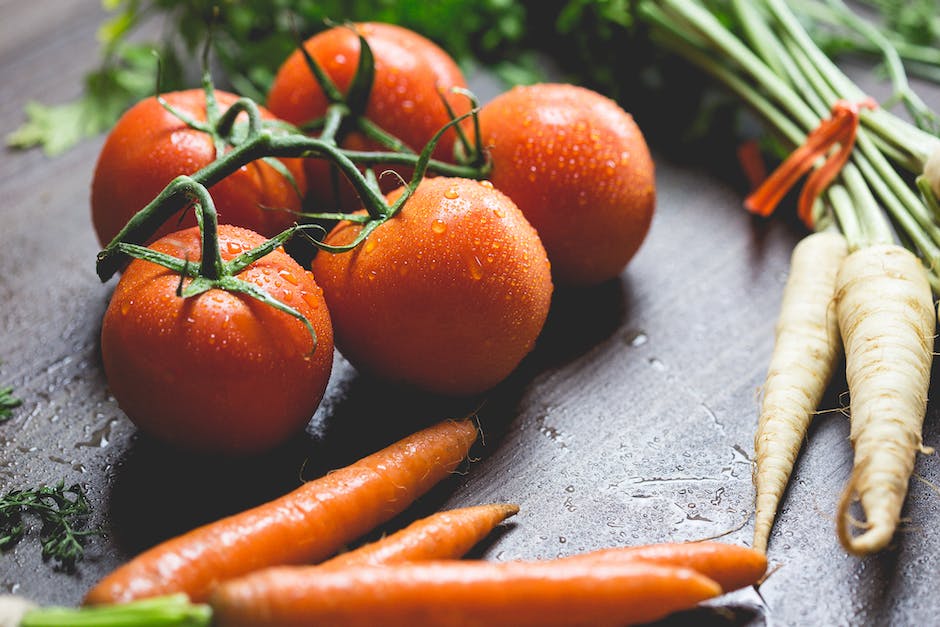

Agridisk
Egypt - Alexandria
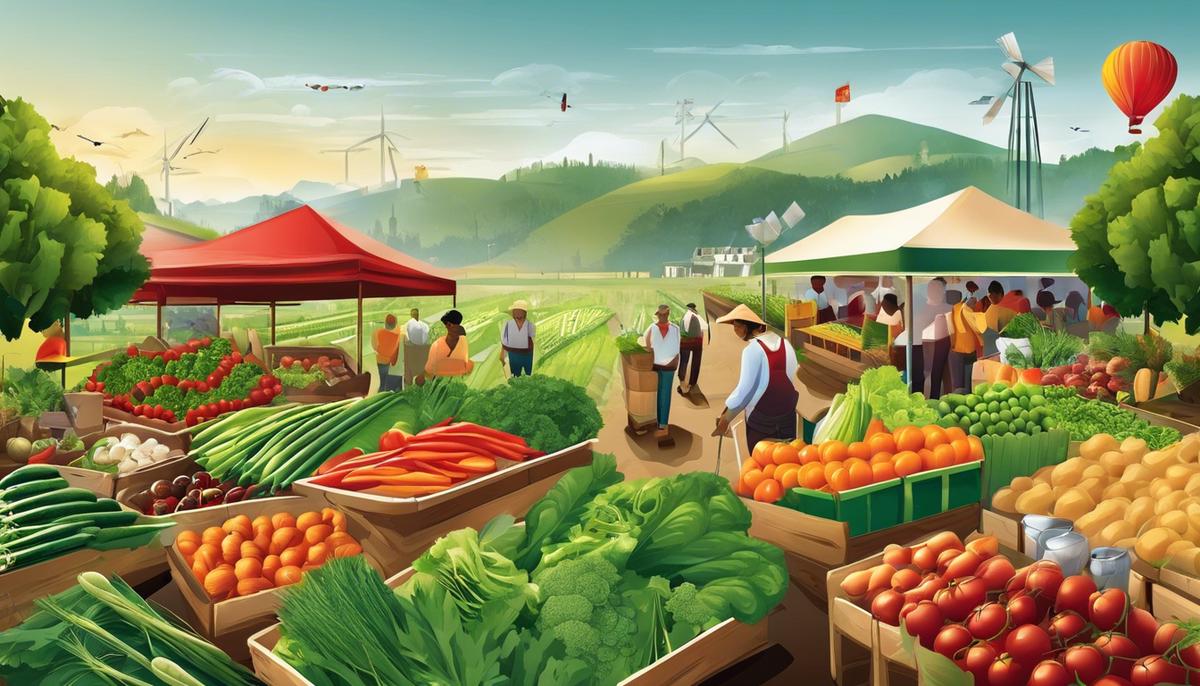
All about vegetable farming business plan & Growing tomatoes in greenhouses: when, how & care tips
Description: There's an old saying that persists even today - no farmers, no food. So, it's pivotal to grasp the magnitude of planning, precision, and strategic thinking that goes into managing a flourishing vegetable farming business. The success of such a venture doesn't merely hinge on the fertility of the land or the yield of seeds. Instead, it calls for an intricate understanding of the marketplace, the capacity to strategize efficiently, embracing innovation and sustainability, and maintaining robust financial management and funding approaches. This paper aims to provide an insightful overview of these vital aspects that contribute to the process of drafting a business plan for a lucrative vegetable farming venture. The world of agriculture has drastically evolved over the years. The traditional farming practices are being rapidly replaced with tech-savvy and sustainable agricultural methods. One industry that is seeing remarkable growth and transformation is vegetable farming. Understanding the current landscape of this industry is crucial for potential investors, and savvy entrepreneurs who are aiming to delve into this lucrative sector. At the advent of sustainable practices, vegetable farming has emerged as a profitable and resilient business. A significant driver of this growth is the increasing consumer demand for fresh, organic produce. More and more households are now leaning towards purchasing healthy, naturally grown food options making the vegetable farming industry a promising prospect for investment and innovation. Through the implementation of technology, farmers are now able to increase yield and quality while reducing resource wastage. Techniques such as precision agriculture and hydroponics are revolutionizing vegetable farming, introducing unprecedented opportunities to the industry. Furthermore, implementation of these innovative farming methods helps in adaptation to climate change, promising long term sustainability of farms. A key market trend that savvy business minds must acknowledge is the increasing consumer awareness about the source of their food. The farm-to-table movement is not just a fleeting trend. Consequently, initiatives that facilitate direct engagement between farmers and consumers are becoming increasingly popular. The rise of local farmers' markets, cooperative food systems, and online sales platforms all stand testament to this trend. The vegetable farming sector also exhibits a burgeoning potential for exports. With effective value chain management, the export market can bring enormous opportunities for growth and profitability. Key to capitalizing on this prospect is understanding and tailoring strategies to global market trends, regulatory requirements, and consumer demands. The business landscape of vegetable farming presents immense opportunities for innovation, such as the development of new farming technologies, digital platforms for sales, and logistic solutions for the supply chain. The industry is ripe for entrepreneurs who are ready to take advantage of these trends and create novel business models that meet the market's changing demands. As in any business venture, understanding the operational challenges is also crucial. In the vegetable farming business, these may include dealing with climate change, managing labor and capital requirements, regulatory compliance, and navigating the complexities of international trade. In conclusion, the modern landscape of vegetable farming business is vibrant with opportunities for both investment and innovation. With the rapid evolution of technologies and shifting consumer trends, the industry is at a juncture where it redefines the future of sustainable, profitable business. Creating Tomorrow's Vegetable Farming Business: Strategies to Thrive in a Changing Market Vegetable farming, while grounded in age-old practices, is propelling into a new era that embraces modern innovations. As the demand for fresh, organically grown produce escalates, an industry once set in its ways is being reshaped. The big question for entrepreneurial-minded farmers is simple – what are the strategies that can assure success in this increasingly competitive market? Harnessing New Technologies Beyond traditional farming practices, success now often boils down to leveraging state-of-the-art farming technology. While precision agriculture and hydroponics can enhance yield and quality, integrating other tech-based solutions – like drones for field analysis, GPS for precision planting, and AI for pest and disease prediction – can give your farming venture the cutting-edge leverage it needs. Sustainable Practices are Non-Negotiable The modern consumer is more aware and concerned about the environmental impact of their purchases. They are willing to pay a higher price for goods produced with sustainability and fair trade practices in mind. Implementing eco-friendly practices, recycling water, using renewable energy sources, and reducing waste in your operations is no longer an option, but a necessity. Product Diversification Consider crops beyond the routine. Speciality, niche products like organic herbs, heirloom vegetables, or exotic produce have a smaller market, but often yield higher profit margins. Aligning product offerings to rapidly evolving consumer tastes can create a distinctive edge in the marketplace and attract a loyal clientele. Digital Marketing The rise of online farmers' markets is a testament to the consumers' willingness to buy directly from the source. Effective online presence, coupled with aggressive digital marketing campaigns, can get your produce in front of the right audience and create brand loyalty. Private Labeling Having a private label on your organic produce can substantially increase profits while cultivating a dedicated customer base. As consumers continue to express a preference for locally grown produce, a recognizable brand that signifies local, quality cultivation will assure long-term success. Get Involved in Agri-Tech The rapid rise of agricultural tech enables us to meet tomorrow's food demands efficiently. Investing in, partnering with, or sponsoring agri-tech start-ups can position your farm as a forward-thinking industry player and potentially provide access to exclusive or early-stage innovations. Strategic Partnerships Forming strategic partnerships with supermarkets, hotel chains, restaurants or health food stores can ensure steady demand and pricing for your produce. Being an exclusive supplier opens doors for marketing collaborations and reinforces your brand value in the market. In conclusion, a futures approach to vegetable farming is the key to thriving amidst changing climate, technological advancements, and evolving consumer tastes. The time is ripe for entrepreneurial farmers to seize these opportunities and chart a prosperous path forward in the industry. But remember, the success mantra in this field relies on continuous innovation, careful risk management, and dedicated customer-centric strategies. In the dynamic world of vegetable farming, innovation and sustainability play a pivotal role. One recent development to consider is the utilization of renewable energy sources. Farms now have opportunities to reduce their environmental footprint, power their operations sustainably and set new industry standards by incorporating wind, solar and bioenergy. Not only does this approach reduce greenhouse gas emissions, it also significantly cuts operational costs over the long term, crafting a robust and resilient industry that’s ready to tackle future challenges. Meeting consumer demands for unique and rare crops speaks volumes about the prowess of a successful vegetable farm. The market for “heirloom” and other specialty vegetables is booming, providing an exciting direction for innovation. Growing these unique varieties of vegetables on a commercial scale can command higher market prices than more common crops, due to their unique taste, aesthetic appeal, and nutritional profile. Therefore, product diversification is a win-win move in the vegetable farming industry. Engaging with consumers online is rapidly becoming a priority in every industry, and vegetable farming is no exception. A well-optimized website and active social media presence can significantly boost outreach and sales. Consumers interested in the farm-to-table concept can keep up with the latest harvests, learn about the farming techniques used, and even make purchases directly from their trusted source. Private labeling is yet another innovative strategy that can significantly differentiate a farm’s produce in the mainstream marketplace. With consumers often willing to pay a premium for organically grown and ethically sourced produce, the appeal of private labeling is clear. Vegetable farming is no longer just about the soil and the seed. Instead, it's a progressive industry that's fast embracing a host of technologies – including robotics, AI, IoT and blockchain. These technologies are redefining the future of vegetable farming – making it more precise, predictable, and profitable. Forging strategic partnerships is another effective approach for vegetable farms to ensure success in the marketplace. By developing relationships with both upstream and downstream industry partners, vegetable farms can gain regular demand and achieve more stable pricing, mitigate business risk and enhance operational efficiency. To sum up, it's clear that the vegetable farming sector is witnessing a wave of significant changes fueled by innovation and sustainability. By embracing these changes, farmers can ensure their operations are not only profitable, but also secure, sustainable, and positioned for long-term success. The move from traditional monoculture farming towards a more innovative, environmentally-sustainable and customer-centric approach bodes well for the future of vegetable farming industry. When we look into a crystal ball for the future of vegetable farming, it forecasts a business teeming with opportunities. Having delved into the transformative elements that are triggering shifts in the sector, identifying the keys for attracting potential investors and mapping financial predictions comes next. Designing a viable business model is akin to connecting the dots. The challenge is not just about planting vegetables but making informed decisions on what to cultivate, how to finance it, where to market it, and who to sell it to. With sustainability and technology playing pivotal roles, one would have to craft a business model that is responsive to market demands and trends. Financial forecasting plays a crucial role. A robust financial model that justifies the profit potential and demonstrates the fiscal prudence of an undertaking is an inevitable part of the business plan. It's more about reading between the lines, unpacking the underlying profitability of each line of produce, and predicting the scalability. Crafting a realistic set of assumptions and projections about sales, costs, and growth potential would significantly improve the credibility of the financial model. Rigorous analysis of benchmarks and market research contributes significantly to driving investment capital. Evaluation of trends in sales, profits, and market growth based on existing operators can be a useful tactic. Benchmarking against successful existing farming practices combined with innovative technology adoption can paint a persuasive landscape for potential investors. Having a professional-looking pitch deck that explains the business model, team, and financial projections succinctly will emphasize the potential for stable returns and reduced risk. It should elucidate all potential growth rates and market capture, and highlight the disruptive potential. Securing capital inflow isn't a one-and-done exercise. It's an ongoing process, just like farming. It entails adopting continuous market surveillance, executing on the strategy, adjusting to emerging trends, and maintaining investor relationships. It is a cyclical process, just like the ever-changing seasons that influence the growth patterns of our crops. Vegetable farming is ripe for investment, driven by increasing consumer awareness, adoption of advanced technologies, and a lean towards sustainability. This creates a compelling narrative for investors looking for industries that are not only profitable and scalable but also contribute positively to society. By precisely communicating financial viability, growth potential, and competitiveness, one can successfully garner interest and investment in the profitable and sustainable future of vegetable farming. The essence of a successful vegetable farming business goes beyond the lentils or lettuce sprouting from the field. It stretches into the realm of analyzing the market landscape, developing strategic long-term goals, fostering innovation, sustainability, and harnessing financial acumen. A clear comprehension of these crucial facets will not only elevate your business into a profitable venture but also significantly contribute towards making the very act of vegetable farming more dynamic and valuable, both economically and environmentally. Here's to the new era of vegetable farming, where conventional methods amalgamate with modern strategies to produce a fruitful, sustainable, and innovative future. Embarking on the journey of greenhouse gardening opens up a world of fresh possibilities, particularly when it comes to growing luscious tomatoes. Within the controlled sanctuary of a greenhouse, you can start your tomato plants earlier in the year and extend the growing season beyond the limitations of the local climate. As such, mastery of timing and varietal selection becomes a cornerstone of greenhouse cultivation. This essay illuminates the pathway to tomato success by guiding you through the nuances of planting schedules, choosing varieties tailored for greenhouse life, and delivering insightful strategies to optimize your plants' health and productivity. By aligning your gardening practices with the unique environment of a greenhouse, you can revel in the bounty of homegrown tomatoes far beyond the traditional growing seasons. As the sun begins to linger a little longer in the sky and the chill of winter gradually fades, the eager hearts of gardening enthusiasts are set aflutter with the prospect of planting. Today, we're steering towards those luscious gems of the garden: tomatoes. Growing tomatoes in a greenhouse can be a tremendously rewarding venture, which not only provides an extended growing season but also shelters your precious crops from the unpredictable elements. So, when is the quintessential time to start your tomato seeds indoors, and which varieties promise a bountiful harvest? Let's dive in. Timing is everything when it comes to growing tomatoes in a greenhouse. Ideally, you'll want to kickstart your tomato cultivation about 6-8 weeks before the last expected frost date in your area. This timeline typically falls around late winter to early spring, ensuring your seedlings are robust enough to transplant once the weather stabilizes. By starting early, you can expect to enjoy your first ripe tomatoes well ahead of the outdoor growing season, making your greenhouse the envy of every tomato-loving neighbor. Now, with timing sorted, let's talk about selecting the right varieties to thrive in your indoor haven. When it comes to greenhouse growing, you'll want to focus on varieties known for their adaptability and robustness in controlled environments. Cherry tomatoes, such as 'Sweet Million' or 'Sungold', are always a popular choice for greenhouse cultivation. Their small, bite-sized fruits are not just a treat to the palette but seem to flourish when pampered under the glass. These indeterminate plants will continuously produce clusters of sweetness throughout the season, and with adequate support, they'll climb their way to impressive yields. For those with a penchant for tradition, 'Beefsteak' tomatoes are a go-to. They require a bit more space and support due to their substantial size but are well worth the effort. These tomatoes are perfect for slicing and adding to any sandwich or salad, bringing a touch of summer flavor to any meal. Another top contender for your indoor tomato garden is the 'Roma' tomato. A determinate variety known for its excellent cooking qualities, 'Roma' produces a prolific and consistent crop, making it the ideal choice for those wishing to create sauces, pastes, or sun-dried delicacies. It is essential to consider, however, that tomatoes are warmth-loving plants and require sufficient heat to flourish. Ensure that your greenhouse maintains a consistent temperature of 70-75 degrees Fahrenheit during the day and not dropping below 60 degrees at night, as this could inhibit plant growth. Adequate ventilation is also crucial to prevent the buildup of humidity and to fend off disease. Last but not least, remember that tomatoes are heavy feeders, so regular fertilization with a balanced, all-purpose or tomato-specific feed will keep your plants in top condition. Pair this with an enthusiastic pruning regimen to maximize air circulation and sunlight penetration, and you've set the stage for a successful greenhouse tomato adventure. So, grab those seed packets, fill your pots with seed-starting mix, and embark on the journey of growing greenhouse tomatoes. With patience and attentive care, you'll soon be harvesting the fruits of your labor, literally. Ready, set, grow! There's something incredibly satisfying about watching tomato plants thrive under your careful watch in the warm, nurturing environment of a greenhouse. If you've already selected your favorite varieties and learned how to keep that perfect climate balance, it's time to talk about planting and spacing your seedlings. This is where the rubber meets the road—or, should we say, roots meet the soil. Spacing your seedlings correctly is critical; get it right, and your tomato plants will have ample room to grow, avoiding overcrowding and its companion problems like poor airflow and light penetration, which can lead to disease. So, let's dive into the nitty-gritty of planting and spacing: Plant Depth: When transplanting your seedlings to the greenhouse beds, plant them deep. Tomato stems have the ability to develop roots all along the buried stem, leading to a strong root system. Plant seedlings up to the first set of true leaves. Root to Roof: Consider the eventual height of your tomatoes. Indeterminate varieties, for instance, will continue to grow until the cold hits, so stakes, trellises, or greenhouse rafters should be ready to offer support as these plants reach for the sky. Row Spacing: The in-row spacing (between plants in a single row) and the row spacing (between the rows) both depend on your greenhouse layout and the tomato variety. Generally, for indeterminate varieties, leaving 18 to 24 inches between plants within a row is ideal. For determinate varieties, which tend to be more compact, 12 to 18 inches should suffice. Between Rows: Space rows about 4 feet apart. This allows ample room for airflow, reduces disease pressure, and makes it easier to tend your plants. If using a trellis system, this spacing also lets you navigate between rows for pruning and harvesting without a hassle. Pattern Planting: Planting in a staggered or diamond pattern as opposed to strictly in-line can maximize space and sunlight exposure for every plant. Plan accordingly so that each plant has space without competing with its neighbor. Container Gardening: If growing tomatoes in containers within your greenhouse, make sure they are big enough, not less than 5 gallons per plant. This ensures enough room for roots and helps maintain soil moisture levels. Final Check: After planting, step back and observe. Will each plant receive enough light? Can you move freely to care for them? A little foresight goes a long way in preventing problems down the line. Remember, the core idea is to balance space for growth with the efficient use of your greenhouse's square footage. Ensuring proper spacing not only fosters robust plants but also simplifies maintenance tasks, which in turn boosts overall productivity. With these tips in hand, you can plant your seedlings with confidence and watch as your greenhouse becomes a haven for bountiful, delicious tomatoes. Happy gardening! Tomatoes in a greenhouse setting yearn for consistent watering to yield succulent and plentiful fruit. Unlike in nature, where rain dictates moisture levels, in a greenhouse, you become the rainmaker. It's wise to employ drip irrigation or a soaker hose to water at the base of the plants, avoiding wetting the foliage. This minimizes the spread of diseases and allows the roots to absorb water more efficiently. For optimal growth, aim to maintain moist, not waterlogged, soil—usually about 1 to 2 inches of water per week, depending on climate conditions. Consider investing in a moisture meter; it's a fantastic tool for getting the water balance just right. Pruning is like a magic wand that, when waved at the right time, reveals healthier and more productive tomato plants. Indeterminate varieties, those that grow and produce fruit continuously, especially benefit from regular pruning. Focus on removing suckers, the small shoots that appear in the joint between the stem and a branch. They might seem harmless, but suckers can drain energy from the main plant, particularly if aspirations for a plentiful harvest are in the cards. Also, don’t hesitate to thin out some of the leaves to enhance air circulation. This practice discourages the development of fungal diseases and ensures sunlight reaches the fruits for a proper ripening caress. A handy tip is to sterilize pruning shears between cuts—dipping them in a solution of bleach and water does the trick—to prevent the spread of any potential plant pathogens. The warm, humid environment of a greenhouse is paradise for plants but also for pests. Vigilance is key. Regularly inspect tomato plants for unwelcome visitors such as spider mites, aphids, and whiteflies. In greenhouse cultivation, biological control is not just effective; it's a commitment to the grower's ecosystem. Introducing beneficial insects, like ladybugs or predatory mites, can tackle pest populations naturally. Also, yellow sticky traps are a must-have in the greenhouse—they attract and capture flying insects like a charm. In cases where infestations do happen, opting for organic or natural insecticides can offer a remedy without harsh chemicals. Neem oil and insecticidal soaps are considered friendly choices for the plants, humans, and the environment. Ensure to apply them according to the manufacturer's instructions, usually during cooler periods of the day to avoid leaf burn. Managing a greenhouse tomato garden is a blend of art, science, and a dash of intuition. With these best practices in nurturing tomatoes—watering deeply but not excessively, pruning with purpose, and managing pests proactively—a greenhouse can become a veritable factory of these luscious red fruits. Just remember, the more love and attention given to these plants, the more they'll give back in the form of juicy, ripe tomatoes ready for the picking. As we cultivate the delicate balance of a thriving tomato garden within the glass walls of a greenhouse, the confluence of knowledge and care weaves the fabric of a fruitful harvest. The precision of practices outlined—from timed planting to mindful pruning and vigilant pest management—serves as a harmonious symphony commanding the growth and yielding of our cherished fruit. With the seeds of understanding now sown, the greenhouse gardener is well-equipped to nurture tomato plants to their full potential, underscoring a journey lined with ripened, vibrant tomatoes that embody both the art and science of greenhouse gardening.All about vegetable farming business plan & Growing tomatoes in greenhouses: when, how & care tips
All about vegetable farming business plan
Understanding the Market
The Exploding Opportunities in the Business of Vegetable Farming

Strategic Planning for a Vegetable Farming Business
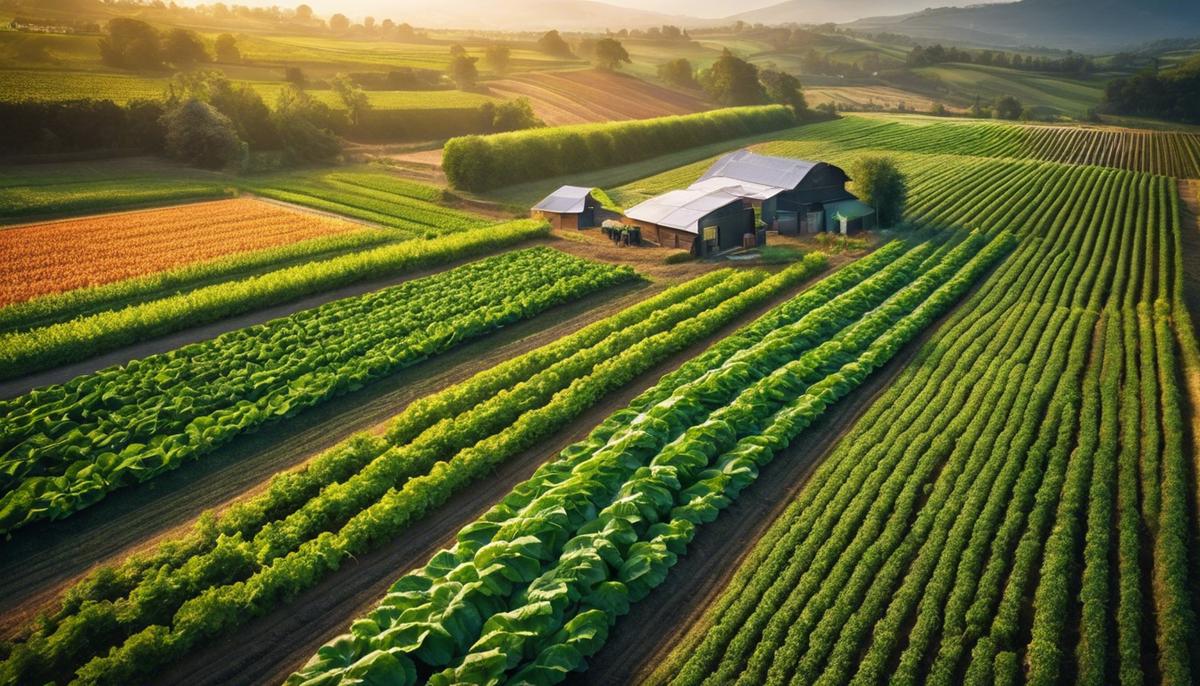
Innovation & Sustainability in Vegetable Farming
Harnessing the Power of Renewable Energy Sources in Vegetable Farming
Product Diversification: Breeding Success with Niche Crops
The Digital Revolution: E-commerce and Social Media
Private Labeling: Crafting a Unique Identity for Organic Produce
The Agri-tech Boom: The Future of Vegetable Farming
Networking for Success: Cultivating Strategic Partnerships
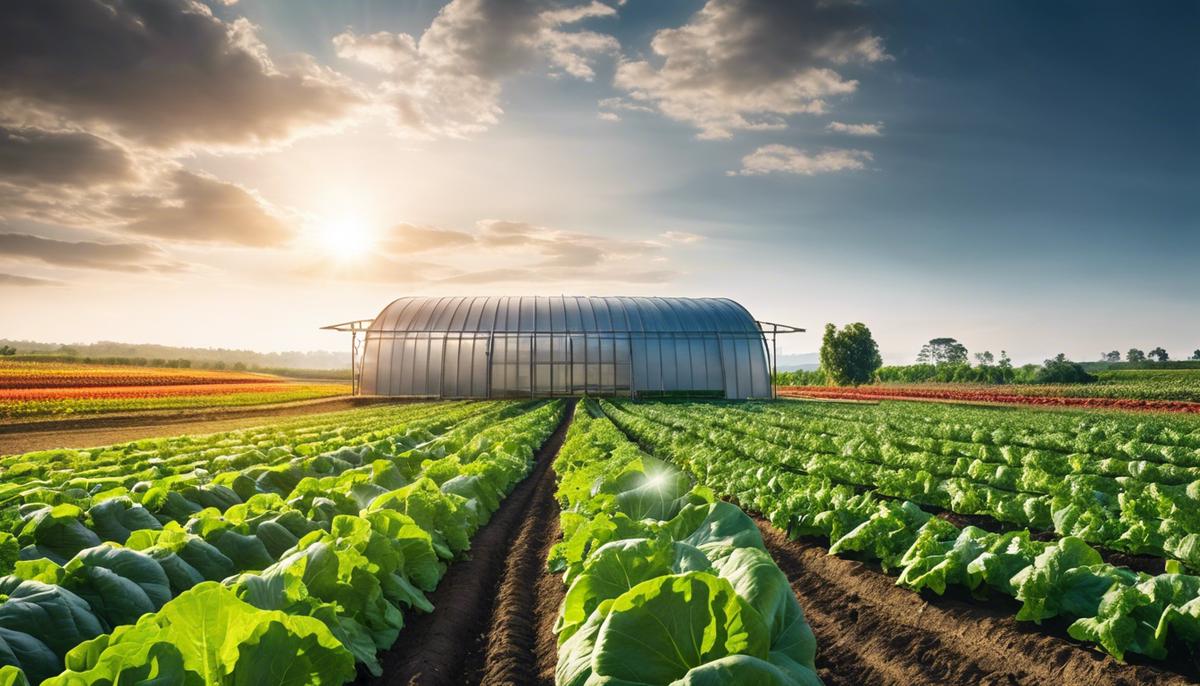
Financial Projections and Funding for Vegetable Farming Business

Growing tomatoes in greenhouses: when, how & care tips
Timing and Varietal Selection | Growing tomatoes in greenhouses
Greenhouse Tomatoes: Timing and Top Varieties for Your Indoor Garden
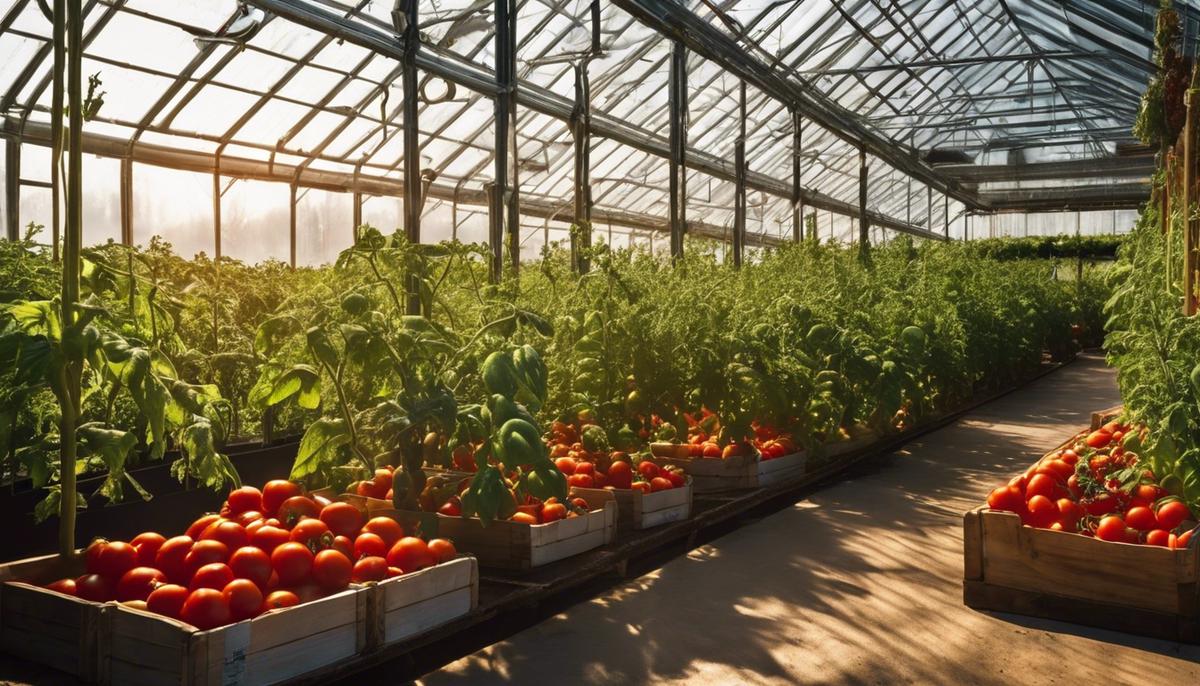
Planting and Spacing | Growing tomatoes in greenhouses
Getting Your Tomato Seedlings Off to a Terrific Start: Spacing Strategies for Maximized Greenhouse Production
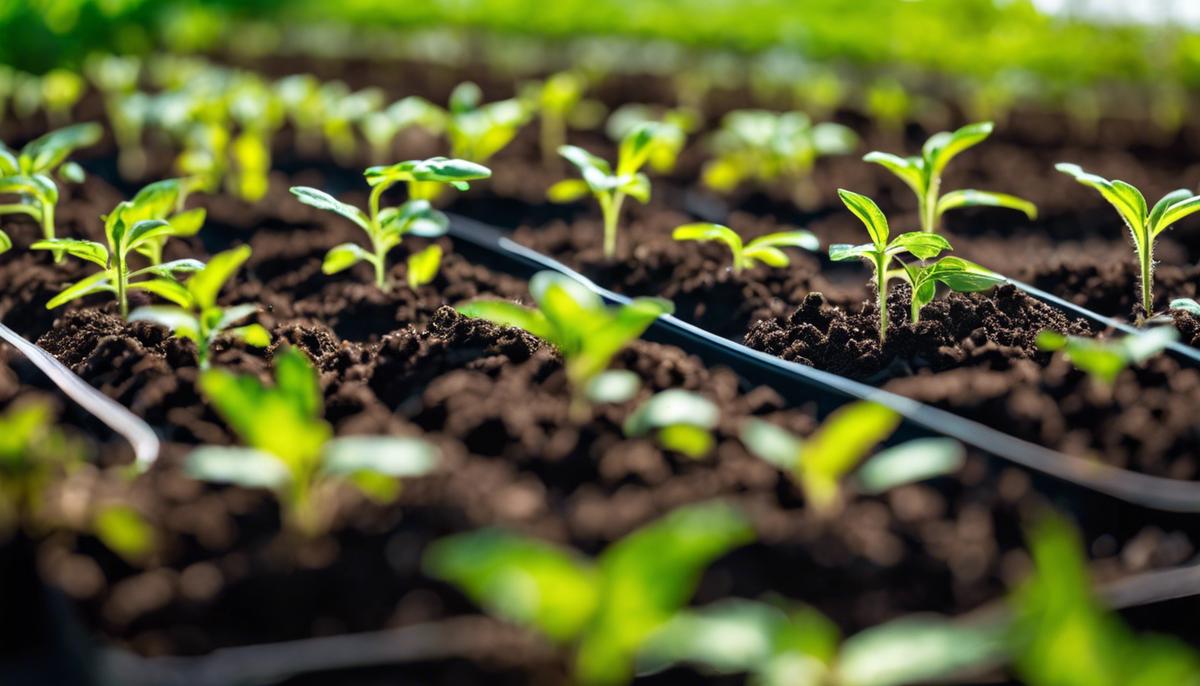
Watering, Pruning, and Pest Control | Growing tomatoes in greenhouses
Watering Wonders: Quenching the Thirst of Your Greenhouse Tomatoes
The Art of Pruning
The Battle Against Pests
